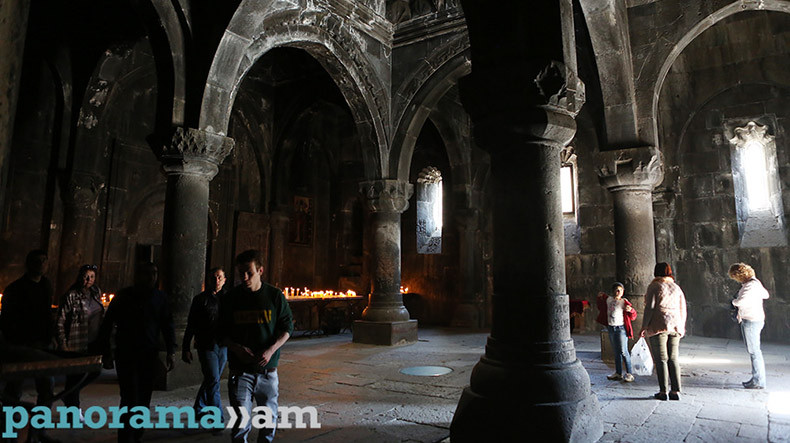
Medieval Armenian site to be granted UNESCO enhanced protection status
UNESCO Committee on the 1999 Second Protocol to the 1954 Hague Convention for the Protection of Cultural Property in the Event of Armed Conflict held a session at the UNESCO headquarters on 27 September to debate, among other things, the petition on grating Enhanced Protection to Armenia’s Monastery of Geghard and the Upper Azat Valley.
The committee unanimously decided to include the bid approval in the agenda of the 13th meeting of the Intergovernmental Committee of the 1999 Second Protocol Committee slated for December, the Armenian Foreign Ministry told Panorama.am.
“Enhanced protection” is a mechanism established by the 1999 Second Protocol to the 1954 Hague Convention for the Protection of Cultural Property in the Event of Armed Conflict. It aims to ensure full and effective protection of specifically designated cultural property during international or non-international armed conflicts.
Cultural property under enhanced protection benefits from high level immunity which requires the parties to a conflict to refrain from making such property the object of attack or from any use of the property or its immediate surroundings to support military action. In case where individuals do not respect the enhanced protection granted to a cultural property, criminal sanctions have been laid down by the 1999 Second Protocol.
As of today, twelve cultural properties were inscribed on the UNESCO List of Cultural Property under Enhanced Protection.
The Monastery of Geghard and the Upper Azat Valley contains a number of churches and tombs, most of them cut into the living rock, which illustrate Armenian medieval architecture at its highest point. The complex of medieval buildings, which has been placed on the UNESCO World Heritage List since 2000, is set into a landscape of great natural beauty, at the entrance to the Azat Valley. High cliffs from the northern side surround the complex while the defensive wall encircles the rest. The monuments included in the property are dated from the 4th to the 13th century.
Armenia’s Monasteries of Haghpat and Sanahin, Cathedral and Churches of Echmiadzin and the Archaeological Site of Zvartnots are also UNESCO World Heritage sites.
Related news
- Armenian Akhtamar Church eyes UNESCO World Heritage list
- Armenia elected vice chair of Bureau of Intergovernmental Committee of 1970 UNESCO Convention
- UNESCO recognizes Armenian Kochari dance as Intangible Cultural Heritage of Humanity
- Visits to ancient Armenian city of Ani double after being placed on UNESCO list
Newsfeed
Videos






























